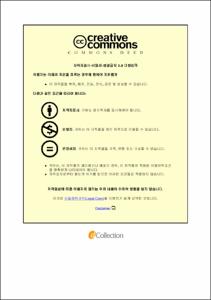신경 교종 쥐 모델(GL261 glioma mouse model)을 대상으로 다양한 영상 검사 및 대사체학(metabolomics)을 이용한 종양의 대사 다양성에 대한 분석 및 고찰
- Abstract
- Objective: We tried to investigate the diverse tumor heterogeneity using various imaging modalities and metabolomic analysis.
Methods: We made a GL261 glioma mouse model in 7 male mice. Region-based analysis was performed by drawing region-of-interest (ROI)s in the tumor outer border and two-thirds of the tumor radius, dividing into tumor center and periphery. Transvsasular permeability (TP) was evaluated in dynamic-contrast-enhanced MRI (DCE-MRI) using an extravascular extracellular agent (Gd-DOTA), and blood volume (BV) was quantified using intravascular T2 agent (SPION). Diffusion of water molecules was evaluated in diffusion-weighted imaging (DWI), and glucose uptake was measured in 18F-FDG PET as maximal standard uptake value (SUVmax). Immediately after imaging studies, glucose-mediated energy production was assessed by measuring the glycolysis and tricarboxylic acid (TCA) cycle activities, and glucose-mediated biosynthesis was evaluated by measuring the pentose phosphate pathway activity.
Results: The TP parameters (EnhRate and Washin) were higher in the tumor center than in the periphery (p = 0.018); however, the BV parameters (CBV and MVV) were higher in the tumor periphery than in the center (p ≤ 0.043). The degree of diffusion restriction was higher in the tumor center than in the periphery (p = 0.042), and the 18F-FDG uptake was also higher in the tumor center than in the periphery (p = 0.018). Among the glycolysis metabolites, FBP and 3PG were significantly higher in the tumor periphery than in the center (center to periphery ratio, 0.1–1.7 for FBP, 0.2–1.0 for 3PG, p ≤ 0.028). In addition, CIT/ISO CIT of TCA cycle and S7P of pentose phosphate pathway were significantly higher in the tumor periphery than in the center (center to periphery ratio, 0.3–1.2 for CIT/ISO CIT and 0.2–0.9 for S7P, p ≤ 0.043).
Conclusion: We demonstrated variable heterogeneities of the vasculature, diffusion, and metabolism between the tumor center and periphery.
|목적: 우리는 다양한 영상 검사와 대사체학 (metabolomics)를 이용하여 종양의 중심부와 주변부의 대사 다양성을 분석하고자 하였다.
대상 및 방법: 7마리의 수컷 쥐를 이용하여 GL261 뇌교종 모델을 만들었고 종양 반지름의 3분의 2에 해당하는 지점에서 종양을 중심부와 주변부로 나누었다. 혈관내 투과성 지표는 혈관외세포제 (Gd-DOTA)를, 혈액량 지표는 혈관내작용제제 (SPION)를 사용하여 역동적 조영 증강 영상 (DCE-MRI)을 시행하여 이미지를 획득하고 각각의 지표를 정량화 하였다. 확산강조영상 (DWI)에서 물 분자의 확산 정도를 평가하였으며, 양전자 방출 단층촬영 (18F-FDG PET)을 이용하여 포도당 흡수 정도를 최대 표준섭취계수 (SUVmax)로 측정하였다. 영상 검사 직후 해당 과정 (Glycolysis)과 시트르산 회로 (TCA cycle) 대사 산물을 측정하여 포도당 매개 에너지 생산을 평가하였고, 오탄당 인산 경로 (pentose phosphate pathway) 대사 산물을 측정하여 포도당 매개 생합성을 평가하였다.
결과: 혈관내 투과성 지표 (EnhRate 및 Washin)는 종양 주변부보다 종양 중심부에서 더 높았고 (p = 0.018), 혈액량 지표 (CBV 및 MVV)는 주변부보다 중심부에서 더 높았다 (p ≤ 0.043). 물 분자의 확산 억제 정도는 주변부보다 중심부에서 더 높았고 (p = 0.042), 포도당 흡수 정도도 주변부보다 중심부에서 더 높았다 (p = 0.018). 해당 과정 대사산물 중 FBP와 3PG는 종양 주변부에서 중심부보다 유의하게 높았다 (center to periphery ratio, 0.1–1.7 for FBP, 0.2–1.0 for 3PG, p ≤ 0.028). 또한 시트르산 회로 대사산물인 CIT/ISO CIT와 오탄당 인산 경로 대사산물인 S7P 모두 종양 주변부가 중심부보다 유의하게 높았다 (center to periphery ratio, 0.3–1.2 for CIT/ISO CIT, 0.2–0.9 for S7P, p ≤ 0.043).
결론: 본 연구를 통하여 종양의 중심부와 주변부 간의 혈관, 확산 및 대사의 다양성을 입증할 수 있었다.
- Issued Date
- 2022
- Awarded Date
- 2022-08
- Type
- dissertation
- Alternative Author(s)
- Lee, Chul-min
- Affiliation
- 울산대학교
- Department
- 일반대학원 의학과
- Advisor
- 김정곤
- Degree
- Doctor
- Publisher
- 울산대학교 일반대학원 의학과
- Language
- eng
- Rights
- 울산대학교 논문은 저작권에 의해 보호 받습니다.
- Appears in Collections:
- Medicine > 2. Theses (Ph.D)
- 파일 목록
-
-
Download
 200000631227.pdf
기타 데이터 / 706.15 kB / Adobe PDF
200000631227.pdf
기타 데이터 / 706.15 kB / Adobe PDF
-
Items in Repository are protected by copyright, with all rights reserved, unless otherwise indicated.